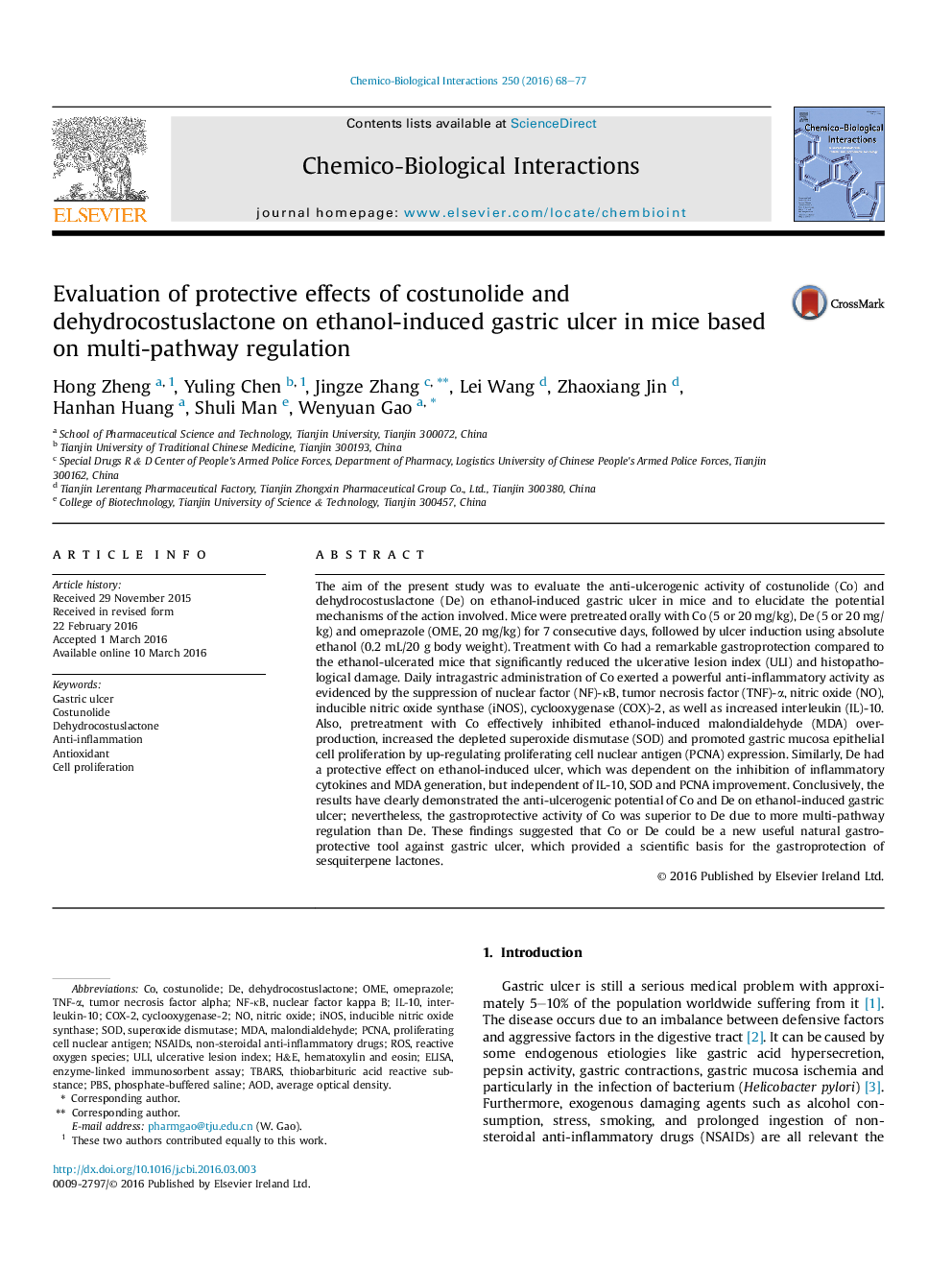| Article ID | Journal | Published Year | Pages | File Type |
|---|---|---|---|---|
| 2579931 | Chemico-Biological Interactions | 2016 | 10 Pages |
•Protection of costunolide and dehydrocostuslactone on gastric ulcer was evaluated.•The protective effect of costunolide was stronger than dehydrocostuslactone.•Costunolide was superior in anti-inflammation, antioxidant and cell proliferation.
The aim of the present study was to evaluate the anti-ulcerogenic activity of costunolide (Co) and dehydrocostuslactone (De) on ethanol-induced gastric ulcer in mice and to elucidate the potential mechanisms of the action involved. Mice were pretreated orally with Co (5 or 20 mg/kg), De (5 or 20 mg/kg) and omeprazole (OME, 20 mg/kg) for 7 consecutive days, followed by ulcer induction using absolute ethanol (0.2 mL/20 g body weight). Treatment with Co had a remarkable gastroprotection compared to the ethanol-ulcerated mice that significantly reduced the ulcerative lesion index (ULI) and histopathological damage. Daily intragastric administration of Co exerted a powerful anti-inflammatory activity as evidenced by the suppression of nuclear factor (NF)-κB, tumor necrosis factor (TNF)-α, nitric oxide (NO), inducible nitric oxide synthase (iNOS), cyclooxygenase (COX)-2, as well as increased interleukin (IL)-10. Also, pretreatment with Co effectively inhibited ethanol-induced malondialdehyde (MDA) overproduction, increased the depleted superoxide dismutase (SOD) and promoted gastric mucosa epithelial cell proliferation by up-regulating proliferating cell nuclear antigen (PCNA) expression. Similarly, De had a protective effect on ethanol-induced ulcer, which was dependent on the inhibition of inflammatory cytokines and MDA generation, but independent of IL-10, SOD and PCNA improvement. Conclusively, the results have clearly demonstrated the anti-ulcerogenic potential of Co and De on ethanol-induced gastric ulcer; nevertheless, the gastroprotective activity of Co was superior to De due to more multi-pathway regulation than De. These findings suggested that Co or De could be a new useful natural gastroprotective tool against gastric ulcer, which provided a scientific basis for the gastroprotection of sesquiterpene lactones.
